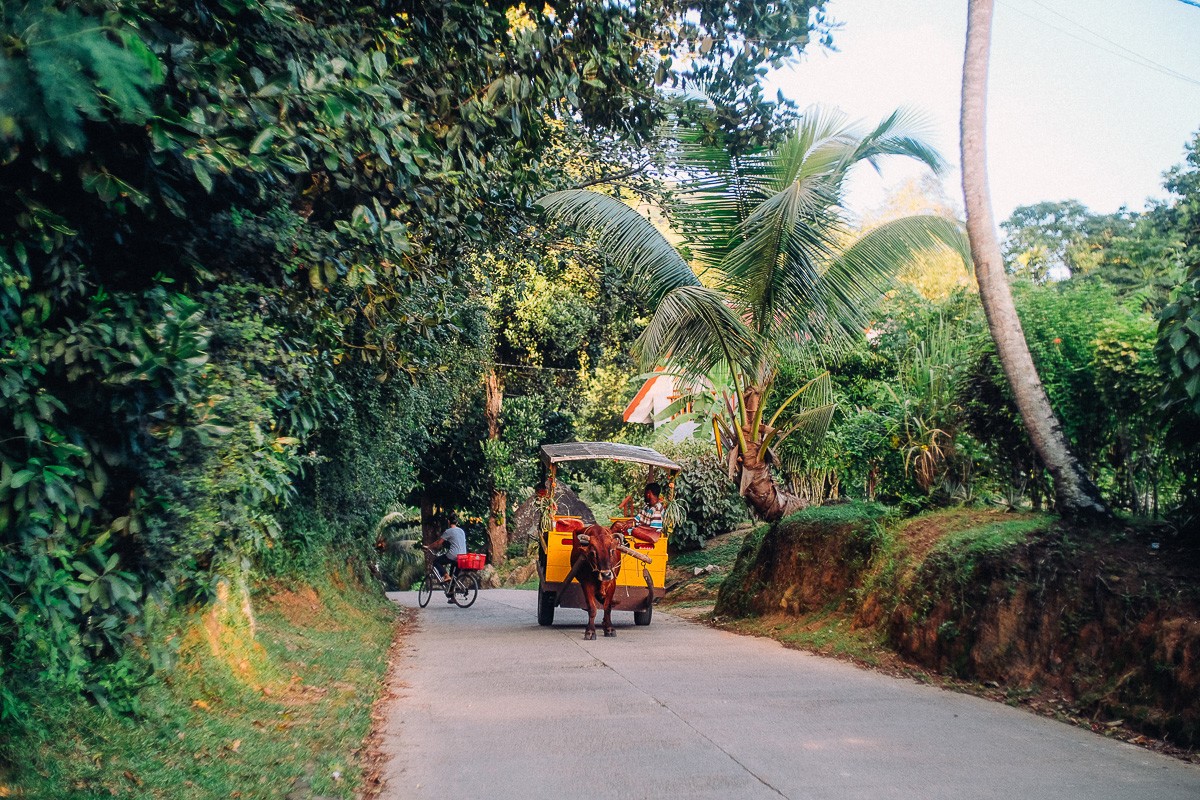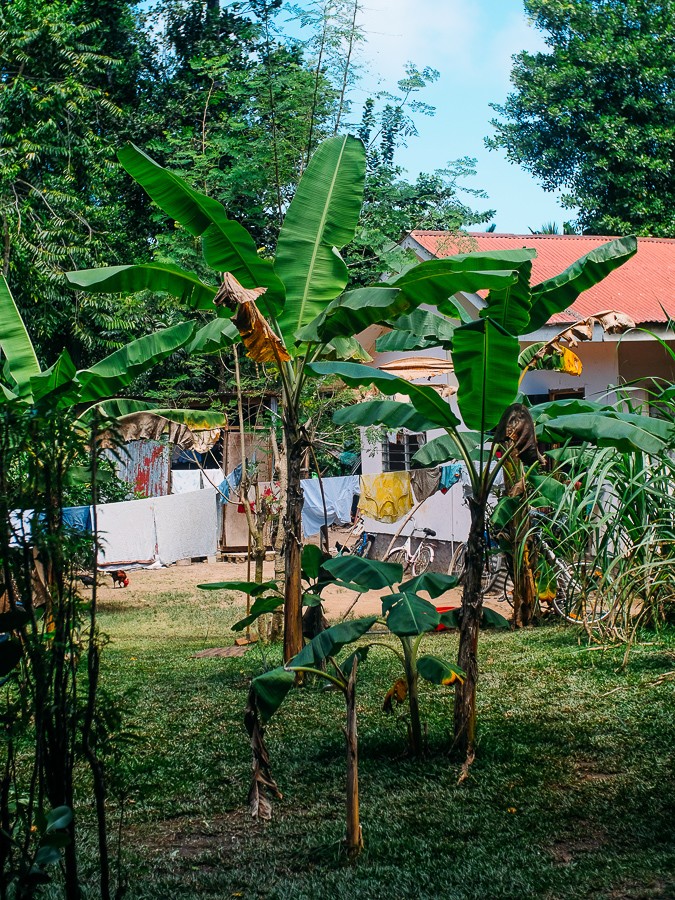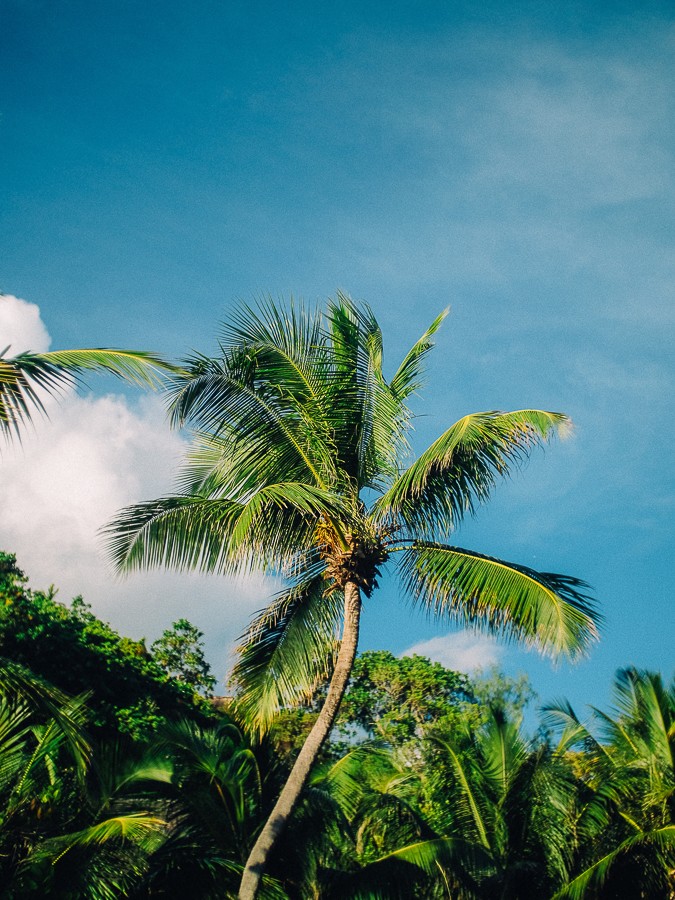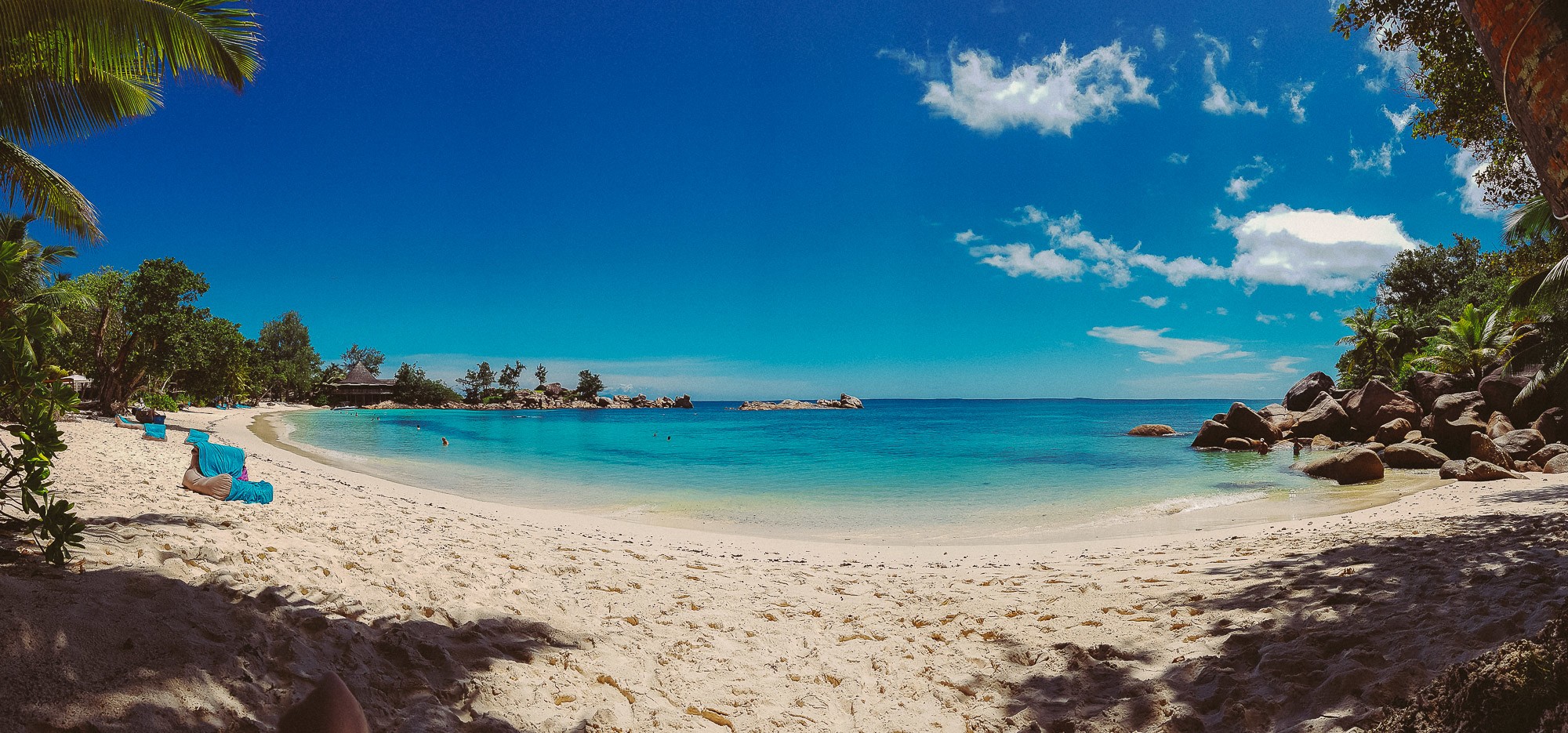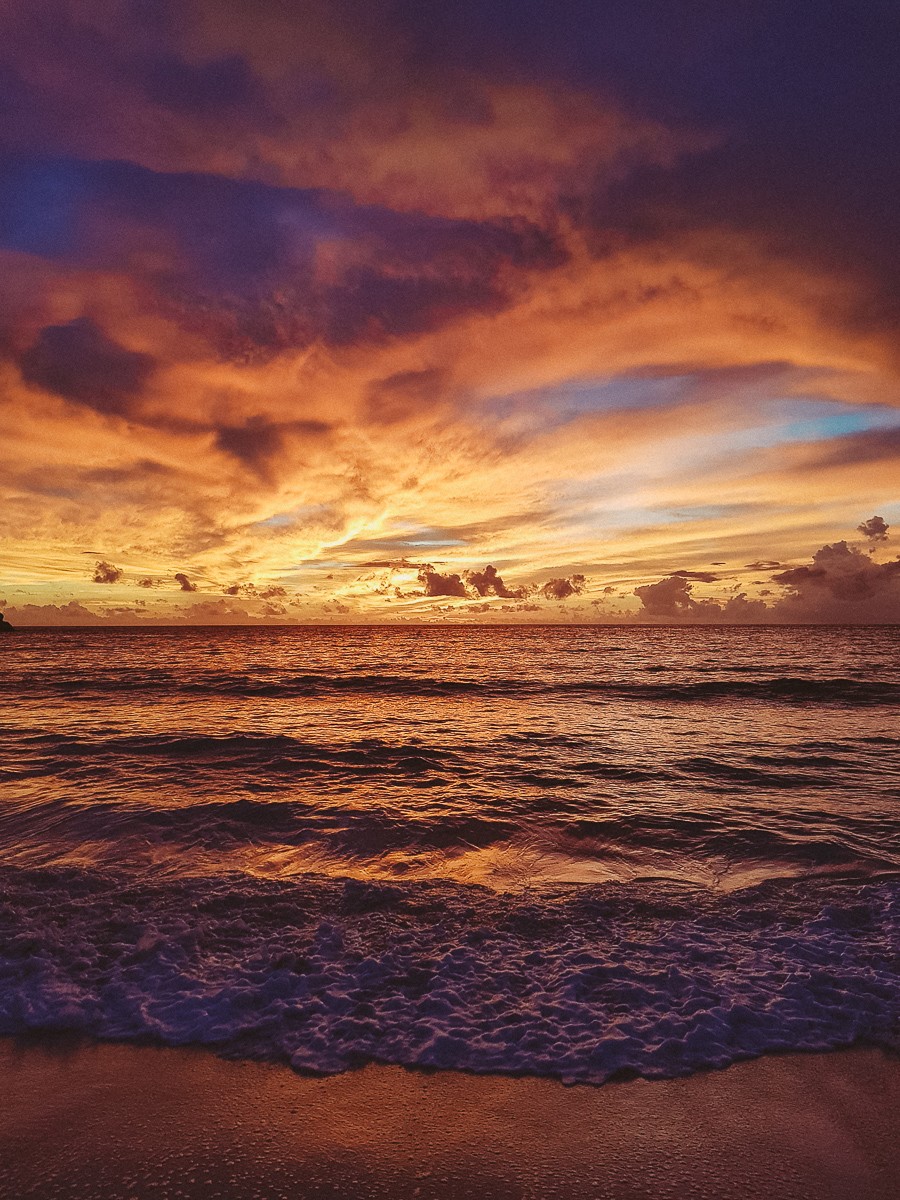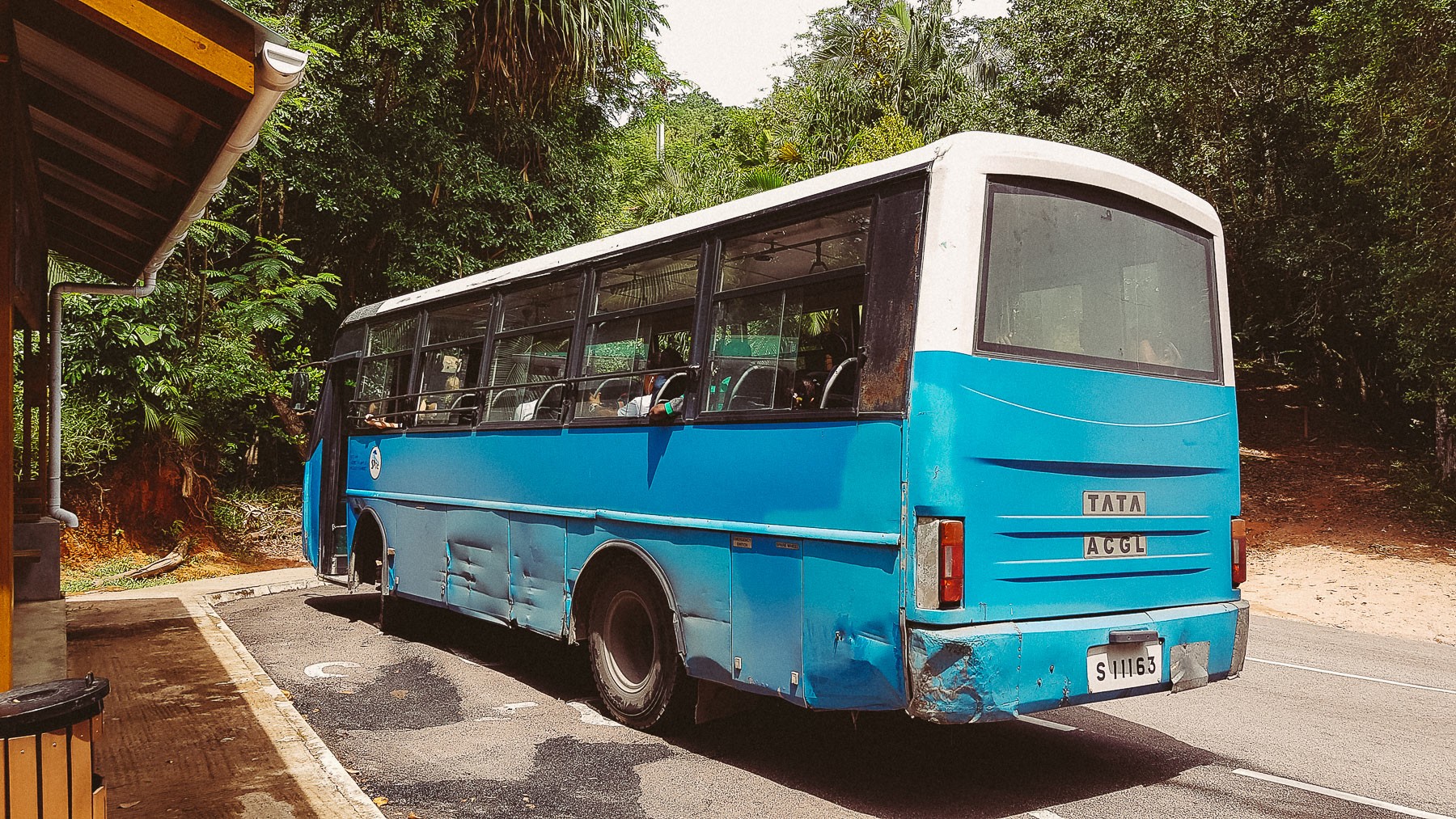Most of Seychelles are rarely visited. The archipelago has corners so remote from civilization that today’s lucky ones who have climbed this far away, for sure, feel themselves like modern Vasco da Gama. After all, this Portuguese pioneer of navigation, sailing to India, accidentally stumbled upon some unknown islands (1501). However, the Portuguese ships did not stay on the islands. The sailors only mapped them. The discoverers were rushing forward to India, which like a magnet, attracted them with treasures and spices. After the Portuguese, the British, the French, and the Dutch stayed here. Seychelles was their last stop on their way to India.
In addition to some useful information about the stunning Seychelles islands in my travel blog, you will learn not only about our impressions, tips and life hacks for planning your trip, but also see atmospheric photos! All the places contain direct links to Google maps in order to easier to find the location, also official sites, or sites where you can get more details. For those wishing to delve into the facts, learn the history, and understand the names, the travel guide is filled with links to Wikipedia.
Going to these paradise islands, you should understand: if you prefer big noisy hotels with non-stop food and drinks, with funny animators and night discos, you should forget about Seychelles! Here the rest is a contemplation of the incredibly beautiful landscapes and pleasure of solitude and silence.
When is the best time to visit Seychelles?
Since Seychelles has a year-round warm tropical climate, therefore, any month will be fine. Still, the choice of the month depends on your holiday interests. However, the best time to visit Seychelles is between April and May or October and November, as these are the quieter periods between the two trade winds that blow the island over every year. Check out the official Seychelles tourism website for their detailed recommendations on visiting the islands. For your information, we had our rest in Seychelles in the second half of April.
Interesting facts about Seychelles
The majority of the population (almost 90%) are black descendants of African slaves who belonged to white settlers and pirates in the 18th and 19th centuries. Over the past 200 years, the ethnic palette of Seychelles has been greatly changed by Europeans and Asians. The Republic of Seychelles is the official name. It includes 115 large and small islands, of which only 33 are inhabited, and quite a few atolls. An atoll is a coral island or archipelago that looks like a solid or broken ring surrounding the lagoon. The tropical climate and the proximity of the equator make Seychelles a flourishing corner of the world.
It is believed that only wealthy bourgeois can afford a vacation in Seychelles, and common people have nothing to do there. And this is partially true. Vacationing in this tropical paradise isn’t cheap, but this is the government policy. High prices significantly limit the number of visitors. It is a kind of payment for the exclusivity and elitism of holidays on the islands. However, people who know how to calculate the costs of rest and do it in advance, manage to have a rest and not to go bankrupt here in Seychelles. So, if you ask a Frenchman or a Russian German: “Is it true that Seychelles is a pie in the sky, and is it necessary to have an extremely fat wallet to relax on the islands?” Both will raise their eyebrows in bewilderment and answer that paradise remains itself even without excessive luxury. And it seems to me that they will be right! These paradise lovers book both guesthouses and small hotels in advance.
Elite hotels, as a rule, are located in the most picturesque bays, near the most beautiful beaches. However, according to the local law, not a single person can be restricted to get to the beach (even if you need to cross the territory of a hotel for this). Any beach on the islands is public. We were complained by locals and hoteliers that over the past couple of years, hotels had been built near the most beautiful beaches. Despite the law, locals are not allowed in by the guards. Nevertheless, there are a couple of life hacks for tourists.
The secrets to getting into hidden Seychelles beaches
Lifehack №1: reserve a table, massage, or something else at the hotel. You will need to show security guards your reservation at the entrance. And that’s it. Go to the beach in peace. They can call a buggy (electric car) for you and take you to the point with a breeze.
Lifehack №2: local hoteliers often have their treaties with hotels, and the only thing you need to do is to arrange with a local to get you a pass.
Lifehack №3: cross the coastline, if it is possible.
Lifehack №4: write directly to the hotel manager that you would like to relax on such and such beach, referring to the law on public access.
What do I need to know about swimming in the Seychelles ocean?
When going to Seychelles, be sure to take your snorkeling mask with you! Warm and crystal clear water will open an amazing underwater world! To fully enjoy the underwater world, it is best to get to Seychelles in April or May, when the ocean is at its calmest and sand from the bottom does not obscure the water beauty. Even at a fair depth, visibility is up to 40 m! The abundance of the underwater world will surely please you the moment you put your face into the water! You will see a lot of different fishes such as parrotfish or napoleon fish, corals, interesting algae, shells, underwater turtles, octopuses. It is nice to watch the rays floating on the surface of the water. By the way, it is better to keep a distance from them and behave calmly because of its poisonous tip on the tail. Here you can also see harmless small sharks – barracuda, sea caterpillars, sea cucumbers, sea stars, sea urchins, and many other amazing inhabitants. Some underwater inhabitants prefer to remain unnoticed, while others, on the contrary, want to get to know you better. Some fish species will happily follow you, while others will try to cleanse your dead skin particles.
Continuing the ocean story, I would like to emphasize that the non-standard rip current is quite common in Seychelles. The locals complained to us that this problem is increasing every year because of an active excavation of ocean sand and that the water reacts unpredictably. Lovers of long-distance swims will have to give up their hobby and stay closer to the shore. Choose quiet coves for a relaxing swim, but do not swim beyond its edges. And if you are on a beach with a long coastline, do not swim far. Stay close to the shore and while swimming, look at your position to the shore. Water can suck here with great force. What is more, the strength and direction of the current can change several times during the day. Keep this in mind!
Our favorite beaches are:
Petite Anse, located on the territory of the Four Seasons Hotel ↓
Baie Lazare beach. We liked the part of this beach, located near the Kempinski Hotel ↓
Magnificent small beach Petite Anse Kerlan, which is fully occupied by Constance Lemuria Hotel ↓
On the territory of the same Constance Lemuria hotel, you will find one of the most famous beaches of the Seychelles – Anse Georgette ↓
Another beautiful beach is Anse Takamaka Beach ↓
Most of the buildings in Seychelles naturally fit into the landscape of the local nature. The Seychellois try not to disturb natural harmony in any way. According to the law, no building can be taller than a palm tree on the islands- this is the law.
Facts about Mahe and Praslin islands, legendary Coco De Mer
The French historically liked to give their names to the colonies. The Seychelles islands were named after the Minister of Finance, Jean Moreau de Séchelles. The island of Praslin (discover about the island more here) bears the name of another Frenchman: the naval minister Viscount de Plessis-Pralen. Praslin Island is half the size of the capital Mahé (discover about the island more here). However, the Praslin inhabitants are considered to be the most prosperous of the entire archipelago. Of course, their life is provincial and quiet compared to the metropolitan Mahe, but they have one priceless treasure. The fact is that when the Seychelles islands are called the paradise islands, this is not a figurative definition, but a scientifically proven fact by the legendary General Charles Gordon. Being here on business this Britishman happened to be on the island of Praslin and found something there that he had never dreamed of finding: vivid signs of biblical Paradise. He discovered a unique fruit if to be more precise. Charles Gordon noticed that there are male and female local coconut trees. The fruit of the Seychelles palm not being peeled from the shell resembles a heart in shape – a symbol of purity and goodness. But the peeled nut looks more like a woman’s thighs. Male palm fruit is shaped like a penis. Botanists all over the world consider the Seychelles palm – Coco de Mer to be one of the wonders of the plant world of the Earth! Therefore, Coco de Mer is inscribed on the UNESCO World Heritage List. Speaking of Seychelles palms, they perform not only symbolic functions. Their fruits and timber are the country’s most important export goods.
In the central part of Praslin Island, there is the Vallee de Mai Nature Reserve (discover more here). The reserve is the birthplace of Coco de Mer. Some of the palms are more than 1000 years old! 4000 species of this endemic palm species grow here. You should spend at least 2 hours exploring the reserve. There is a splendid opportunity to get to know the world of tropical plants better in the Vallee de May, to learn how it used to be like before the arrival of the Europeans.
Another important sector of the Seychelles economy is fishing. The average Seychellion eats 80 kg of fish per year, making the islanders the biggest consumers of seafood on the planet. Whole families are involved in fishing.
Eating
There is Creole cuisine in Seychelles, featuring French and Indian dishes. It contains many salads from exotic vegetables and fruits, but the main place is occupied, of course, by fish. The most popular ones are Dorada, Marlin, and Bonito. Each fish is flavored in a special way during the preparation by using local spices and cooking methods.
There are very few shops in Seychelles. The shops are tiny, and there are even fewer goods in them. They sell chips, beer, some fruit, tanning products, drinking water, and Seychelles rum – Takamaka (official site). If you’re planning self-catering, Seychelles is an inconvenient place for it. In the local Hindu shops, you will not find the necessary set of products for a full meal. Locals buy their food in the markets, which are very few, or in supermarkets located in the main towns.
If you want to eat well, but have no desire to search for good shops and markets, as well as cooking, here are a few life hacks for you.
Food Hacks
№1: the owners of many private hotels offer their meals, usually dinners. From our experience, we were pleased with such host’s dinners. The dishes were nice and varied. Since we do not eat much in the evening, we took food with us for the next day’s lunch.
№2: according to the same scheme, many hostesses offer a menu as well. You just need to discuss it a day in advance.
№3: take a closer look at where the locals eat. In Seychelles, such a phenomenon as a takeaway canteen is popular. Usually, these are inconspicuous spots in a building around. Here on the menu, you will find a variety of dishes: rice/potatoes + chicken/fish/meat + different types of salads or vegetable/fruit puree. They will pack you in disposable plates + give cutlery.
Takamaka
Local rum differs from any other rum. As the producers themselves claim: “We stand apart from the global rum industry. To know this is to understand the true nature of Seychelles. Pristine and incredibly beautiful Takamaka is produced in this unique place. The paradise we all dream of and which we can escape to.” Takamaka Rum is produced from locally grown sugar cane from four different regions of Mahé. Rum is aged in French and American oak barrels and then blended with more aged rum, local spices, fruit extracts, and spring water from the islands. For more information, please visit the official Takamaka Rum website.
We tried 3 types of Takamaka. We liked the dark spiced rum the most. It should be drunk with ice as a dessert. It is perfect as a drink somewhere by the ocean while observing the fantastic Seychelles sunsets. The taste of this rum is soft, viscous, moderately sweet, and intense, it does not burn at all. The smell of dark spiced rum is delicate and unrealistically fragrant, it resembles exotic flowers and coconut. Do not dilute it, add a couple of ice cubes on the bottom of a glass, pour in some dark spiced rum and your drink is ready! Extra noir rum (extra dark rum) is for lovers of more intense flavors. Although it is extra, the taste of rum is still not scalding and quite soft. Coconut rum will be ideal for lovers of something sweet and light, even though it is rum. It is perfect for cocktails. I want to note that Takamaka we bought on the islands and at the airport is different from the one we bought in Europe! Keep this in mind!
Transport
Make sure to try the exclusive local buses! You can easily navigate the islands by bus. I am sure you will remember the rides on these old Indian buses with barefoot drivers for a long time!
You can get from one island to another by ferry or plane. Tickets can be booked in advance online or locally, but please note that seats are limited. It is better to think of your tickets in advance.
The island of La Digue
The tiny island of La Digue (discover more information about the island here) can only be reached by water transport from the port of Praslin Island. The trip takes about 20 minutes. The most popular flight is the earliest – at 7 a.m. The thing is that most people come here for a day and, in my opinion, they are right to be doing so. From my experience, I can say that there is not much to do on the island and one day here will be enough for you. It might not be worth visiting at all if you are looking for a quieter, more secluded rest with empty, clean beaches filled with marine beauty.
The island of La Digue used to be exclusive until the time when the authorities lowered the prices for land on it. Locals began to actively inhabit the island, build guest houses on it and attract tourists. As a result, La Digue is now a real anthill. The locals themselves are already used to it and are pretty tired of tourists. Do not expect any smiles, attention, good nature, high and well-mannered service from them. What is more, you will not find adequate prices either for housing or for everything else. Having spent the first 5 days on Mahe and 4 days on Praslin, we were also going to La Digue for 5 days (after we had read completely outdated reviews before the trip). Eventually, we fled back to Praslin in the early morning of the 3rd day! In my opinion, the island of Mahe deserves more time, because it is the largest, with lots of activities on its territory.
A wonderful mosaic of an amazing underwater world, gray rocks, crystal water, dazzling sand, tropical greenery, and unique Takamaki will forever remain our magical memory of Seychelles!




















